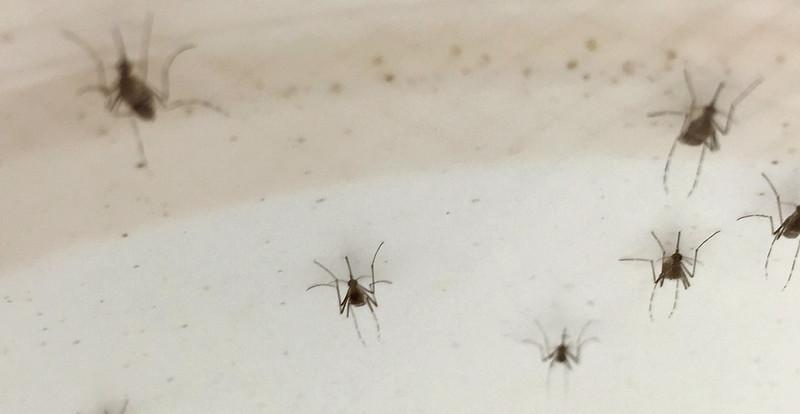An insecticide paint used on houses in Cabo Verde, Africa, was able to control local populations of Aedes aegypti mosquitoes for at least 1 year, according to a study today in Frontiers in Tropical Diseases.
Ninety-eight percent of residents with houses coated in transfluthrin-based insecticide paint reported a significant reduction in the mosquitoes that most commonly transmit yellow fever, malaria, Zika, and dengue during the year-long experiment in the small country off the coast of West Africa.
More than 200 houses tested
Insecticide paints (IP) are one of the new technologies highlighted by the World Health Organization's (WHO's) Global Vector Control Response 2017-2030, a strategy that aims to control vector-borne diseases (VBDs), as they make up more than 17% of all infectious diseases.
"In contrast to the continued and repeated use of indoor residual spraying (IRS), IP exerts constant and lasting pressure on mosquitoes over longer periods," the authors wrote.
In contrast to the continued and repeated use of indoor residual spraying (IRS), IP exerts constant and lasting pressure on mosquitoes over longer periods.
To test the viability of the Inesfly Vesta insecticide paint, researchers in 2022 painted 228 houses in two Praia neighborhoods, some of the most densely populated neighborhoods in the country where residents report high mosquito activity.
"Both sites lack proper territorial planning and are in low-lying areas of the city with insufficient drainage that leads to flooding in the rainy season. Drinking water supply and wastewater disposal are deficient as well," the authors said.
Few adverse effects reported
Houses were selected based on larvae traps in the neighborhoods, and each received two coats of an insecticidal paint. Treated houses were subject to mosquito egg monitoring, and residents completed surveys at 1 month post-paint and were asked about their knowledge, perception, and satisfaction concerning IP, its efficacy, and its perceived adverse effects.
At 1, 3, 6 and 12 months, WHO cone bioassays were conducted at two randomly selected houses in each neighborhood to record the mortality of the Ae aegypti mosquitoes.
The authors found that, at 1 month, IP caused complete mortality of Ae aegypti mosquitoes. By month 3, all IP-treated houses exceeded the WHO efficiency threshold for mosquito control, which is 80% mortality.
The Vesta IP maintained that control at 6 and 12 months, beating out other formulations.
"Here we show that VESTA insecticide paint is effective at killing Aedes aegypti, the yellow fever mosquito, in the city of Praia for at least one year," said lead author Lara Ferrero Gomez, PhD, in a press release from Frontiers. "The paint works by releasing very small quantities of insecticide over a long period, which makes it more sustainable and eco-friendlier."
Among residents who lived in IP houses, 16.7% reported some adverse effects, but most were mild, including eye and or nose irritation (10%), dullness (4%), and headache (4%).
"It is recommended to conduct further studies of a community-based intervention on a large scale to reaffirm the findings found in this study in terms of efficacy and acceptability," the authors concluded. "Operational research and cost analysis need also to be addressed to promote the use of IPs in the Aedes control programs at the national and local levels."




















